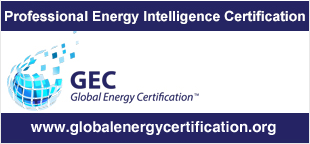Global Guide to Natural Gas Utilities Edition 1, 2012
This new NRG Expert Natural Gas Utilities Report is a guide providing a fully comprehensive global analysis for the Natural Gas Industry. This report includes; a description of the different types of natural gas and uses, the global natural gas situation including reserves, market, trade and the gas exporting countries forum, coverage of the natural gas market at the regional level, in depth reporting of the economic situation and natural gas market including natural gas production, transportation, distribution and generation of electricity amongst others for 116 countries worldwide. Carbon reduction commitments and low gas prices relative to other fossil fuels have made natural gas more attractive for power generation and transportation. Overall consumption of natural gas has been growing worldwide. In emerging economies such as China and India domestic supply has not been able to meet growth in demand. More countries are importing natural gas. Increasingly this natural gas is being transported over longer distances. Thus, the transportation of liquefied natural gas (LNG) has been outpacing growth in the trade of natural gas via pipelines, which is more expensive over longer distance.
> More InformationNRGNRU1
£995
Global Oil Reserves & Shale Oil Report Ed 1 – 2012
The new NRG Expert Global Oil Reserves and Shale Oil report looks at global oil reserves and shale oil by country and company. The Shale Oil market and to date production of shale oil has been mainly restricted to periods in history when oil supplies were constrained or expected to be constrained or when governments supported the sector. For example, interest in shale oil projects was high during and after wars due to concern over possible supply constraints. After the 1973 oil embargo a reduction in oil supplies resulted in many countries exploring and producing domestic shale oil.
High oil prices have made expensive shale oil projects more attractive, but the volatility of oil prices have made it risky to invest in expensive projects that require a high oil price to be profitable. Oil prices are projected to rise, which may make projects profitable in the long-term, particularly in countries keen to increase domestic oil production. Competition from conventional oil and unconventional and frontier gas is a significant risk, for example oil sands and deep offshore gas. However, as OPEC oil is expected to continue to dominate the oil markets, countries with oil shale reserves may be keen to develop, at least some domestic oil industry.
> More InformationNRGSHO1
£850
Global Natural Gas Report Ed 1 – 2012
This new report provides an analysis of the global Natural Gas Market and its future development. Carbon reduction commitments and low gas prices have made natural gas more attractive as a fuel for power generation and transportation. Traditionally natural gas was flared as a waste product of the oil industry. Now natural gas is a viable alternative to coal as a cleaner fuel for power generation and a cheaper fuel than oil for transportation in some sectors. Furthermore, natural gas liquids (NGLs) are increasingly replacing products from oil in the production of petrochemicals, especially ethane for naphtha. This report provides; natural gas prices, supply and future directions for the market, potential of unconventional uses of natural gas and NGLs, coverage of the natural gas markets at the country-level, an in-depth analysis of the major independent and state-controlled natural gas players, plus much more including forms of natural gas for transportation and natural gas reserves.
> More InformationNRGNR1
£1,200
Shale Gas Report Ed 1 – 2011
This new report looks at the global Shale Gas market, the changes, developments and forecasts for the future. Shale gas has been a ‘game changer’ in the US changing the country from being reliant on imports for the foreseeable future to being able to meet demand from domestic production. A large reduction in the cost to produce natural gas from shale has made shale gas economically viable. So presently US natural gas prices are around USD 4 per mmBtu. Whether shale gas can maintain its meteoric rise is uncertain. Low gas prices have made the economics of shale gas projects less attractive and are expected to remain bearish in the short-term. Furthermore, there is concern over the environmental impact of fracturing water and the amount of water used in the fracturing process. New environmental legislation on hydraulic fracturing, if passed, could drive the costs of hydraulic fracturing higher, possibly leaving only the big players in the shale game.
> More InformationNRGSG1
£650
Oil Sands Report Ed 1 – 2011
This new report looks at the global Oil Sands market place now and the predictions for future growth development and change. Rising oil prices have renewed interest in oil sands and extra-heavy oil projects. In the two countries with the largest proven reserves, Canada and Venezuela, there has been an increase in both domestic and foreign investment in projects. With Japan, China and South Korea leading the pack in terms of the monies invested and diversity of projects funded. As all four countries are reliant on oil imports and Japan has no fossil fuel reserves of its own. In Venezuela, for the first time since his election, Chavez has awarded heavy oil blocks in its Orinoco belt to foreign companies. By contrast, the majority of Canadian oil sands leases have been awarded. Therefore mergers and acquisitions are likely to feature heavily over the coming years rather than brand new projects in the Alberta oil sands region.
> More InformationNRGOSR1

















